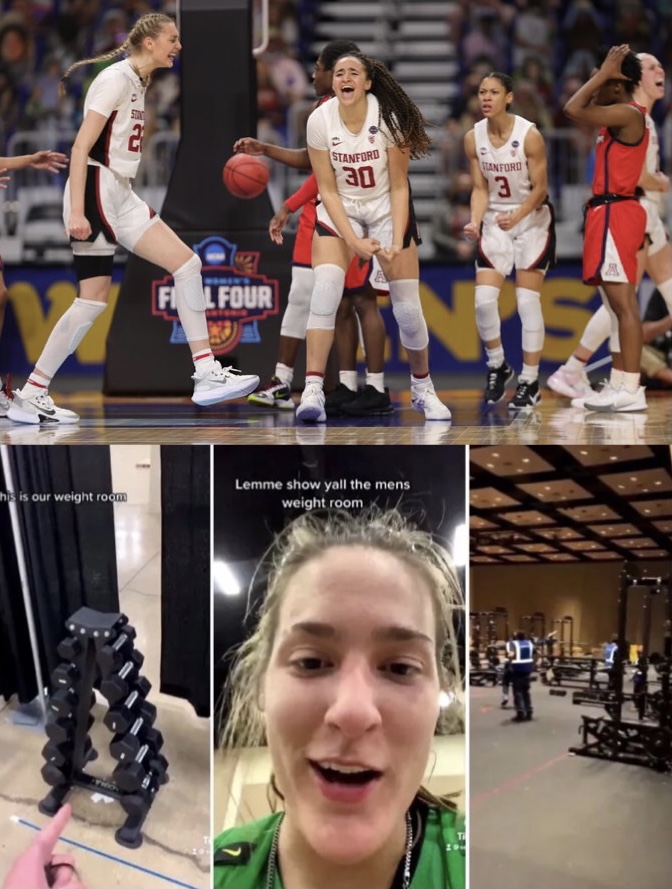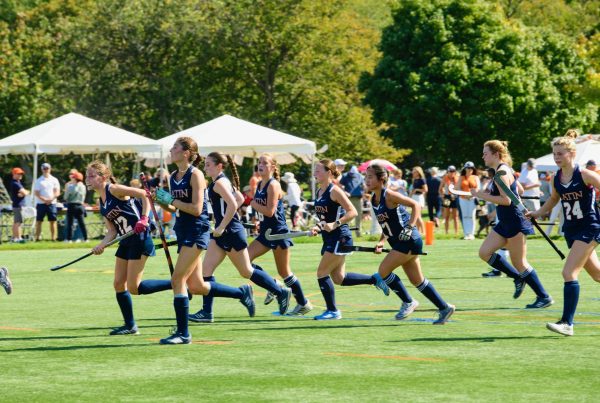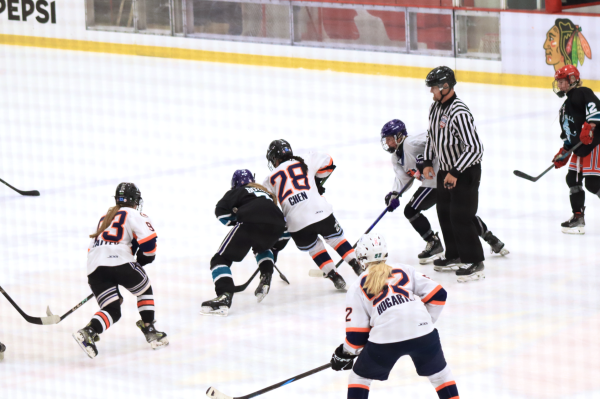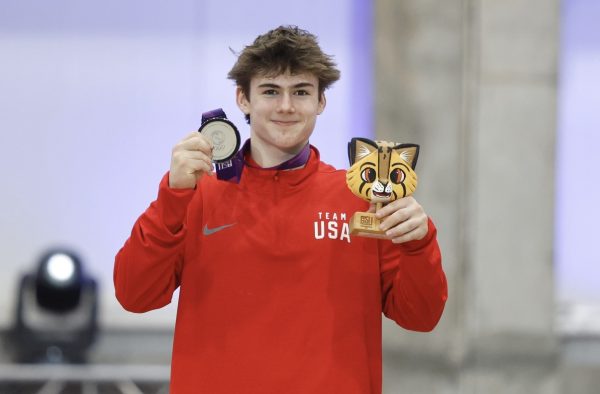Gender Discrimination at The Women’s NCAA Basketball Tournament Brought to Light Through TikTok
The Stanford Women’s basketball team celebrating their win and screenshots of Sedona Prince’s TikTok videos.
The 2021 Women’s Division 1 NCAA Basketball Tournament began on March 21 and concluded on April 4 at the Alamodome in San Antonio, Texas. Top-seeded Stanford took home the championship title after a close 54-53 game against third-seed University of Arizona. This was Stanford’s first women’s basketball national championship since 1992, and the game ended up being the most-watched women’s national championship since 2014. This record viewership resulted in part from the headlines surrounding the inequities that the players were facing.
Issues of gender equality came to light after University of Oregon player Sedona Prince posted a video on social media showing how different the women’s weight room was from the men’s at their respective tournaments. While the men’s weight room was quite large, including a wide variety of equipment, the women’s was a small room with only six weights and several yoga mats. In response to Prince’s video, the NCAA released a statement saying that the women’s significantly smaller gym was due to “limited space” and that the area was going to be made larger as soon as more teams were eliminated. The NCAA ended up making a bigger weight room for the players, but the inequities didn’t end here.
Prince later posted a different video regarding small pre-packaged meals that were provided to the players at the tournament, and ESPN host Sarah Spain tweeted two side-by-side photos of the small food packages at the women’s tournament in comparison to the large buffet that the men had.
Front Office Sports, a sports media brand, tweeted side-by-side pictures of the swag bags that were given to the male players in comparison to the female players. In the photos, the men’s bags were filled with significantly more merchandise items than the women’s.
Later, the University of Connecticut women’s basketball coach, Geno Auriemma, told several reporters that his team, along with the other women’s teams, were not receiving the same COVID-19 tests as the men’s teams. The women received daily antigen tests, and the men received daily PCR tests. According to the U.S. Food and Drug Administration, antigen testing provides quick results but has a higher chance of missing an active infection, while the PCR test is the most accurate test available for COVID-19 detection. As this information on testing made its way out, the president of the NCAA, Mark Emmert, said, “All the health experts said the protocol that we’re using in all of our venues and at all of our championships are no different at all in terms of our ability to mitigate risk.”
Junior Kai Lugo, a boys varsity basketball player at Latin, shared his thoughts on the inequalities that are woven into women’s sports. “It’s pretty disappointing that such a large organization like the NCAA cannot provide equal equipment for the women competing,” he said. “It’s also an example of how men are blatantly favored. The exercise equipment that the female teams [had in comparison] to the male [teams] is unacceptable, especially when these things are necessary for both [men and women] who are both competing at an equally high level of competitiveness and intensity.”
Several athletes on the Latin girls varsity basketball team shared their thoughts on the NCAA women’s basketball situation and their experiences with discrimination as female athletes. Junior Shea Moroney shared, “It was very disheartening to find out that the women’s NCAA teams were given lower quality amenities and resources than the men’s teams.” Shea added, “These women had worked just as hard to make it to the tournament as their male counterparts yet were not provided with an equal opportunity to train and prepare for their games.”
Senior Charlotte O’Toole said, “People try to use the argument that women’s sports bring in less money than men’s sports, but if you took a look at those two weight rooms, no argument about money can explain why the women’s room looked like it did when compared to the men’s room; there was just such a stark difference.”
Senior Natalie Mann, who will be playing college basketball at Johns Hopkins University this fall, said, “Sports are a microcosm of our world, and sexism is an unfortunate fact of that world.” Natalie talked about how this tournament specifically facilitated change, saying, “This tournament was so important for women’s equality. It showed people that change can happen when people are held accountable. It was also the first women’s Final Four with two black head coaches (Dawn Staley and Adia Barnes), and Adia Barnes showed how powerful working mothers can be as she pumped during halftime of the national championship game.”
When asked about how inequalities in women’s sports impact female athletes at Latin, Shea responded, “My teammates and I have been facing discrimination for our entire athletic careers. From not receiving the same resources [such as] warm-ups, to getting last priority on gym space and practice times, which on many occasions has led to girls basketball practicing in the Lower School gym at absurd hours, female athletes at Latin face similar discrimination as the women’s NCAA teams.” Shea added, “I have spoken to many female athletes at Latin, and almost everyone has been told that the sport they play is not ‘a real sport,’ just because it is a girls’ sport. Whether said as a joke or not, it is upsetting to be told that the thing you work hard towards is not as important as boys’ sports.”
Charlotte said, “It’s a tough feeling, as a female athlete, knowing that your sport is simply considered less valuable and less interesting than the male counterpart. I really hope that the NCAA begins to focus more on women’s sports and provides the same resources and opportunities to women’s teams as men’s teams, as well as work to create a culture of respect for women’s teams.”
Natalie shared her experience, saying, “ I’ve gotten used to [having fewer] resources and people underestimating us, and I’ve learned to work with it. I think it’s also important for me to realize the intersectionality of my identity: I’m a female athlete, but my whiteness also brings a lot of privilege, and there are many other struggles that black athletes face that need to be talked about as well.”

Lily “Pickle” Coleman (22’) is a senior at Latin and is thrilled to be serving as Media Editor this year. In her time on The Forum staff, Pickle...




















































